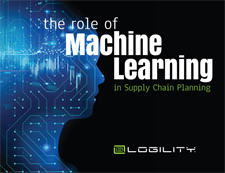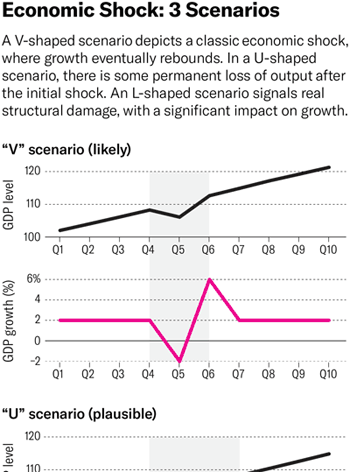Supply Chain, Coronavirus and the Economy
Last week, I wrote a column on the coronavirus crisis and the supply chain, noting I was doing so with some reluctance due to flood of articles and columns on this topic, most of which I found rather boring.
But I decided in the end to weigh in, and did so with a bit of a different angle, using the perspective of how things have evolved in the area of supply chain risk management.
I had planned to move on, but over the past week I found two very non-boring pieces on the impact of the coronavirus, both from the Harvard Business Review and worth summarizing for readers.
| GILMORE SAYS: |
The authors write that "Already it looks like the virus will hasten the progress to more decentralized global value."
WHAT DO YOU SAY?
Send us your
Feedback here
|
The first was from my friend Dr. David Simchi-Levi of MIT and his co-author Pierre Haren, CEO of the fintech start-up Causality Link.
Major supply chain disruptions are likely to soar very soon, in mid-March, Simchi-Levi and Haren say.
The level of disruption will be significant, they believe, "forcing thousands of companies to throttle down or temporarily shut assembly and manufacturing plants in the US and Europe."
They add that the most vulnerable companies are those which rely heavily on factories in China for parts and materials - and there are thousands in that category for sure.
Simchi-Levi and Haren note that the imperative to reduce supply chain costs has led many companies to pursue strategies such as lean manufacturing, offshoring, and outsourcing. Those cost-cutting measures mean that when there is a supply chain disruption, manufacturing will stop not long after because of a lack of parts.
And here is a crucial point: "The vast majority of global companies have no idea of what their risk exposure to what is going on in Asia actually is. That's because few, if any, have complete knowledge of the locations of all the companies that provide parts to their direct suppliers," Simchi-Levi and Haren note.
I similarly referenced the challenges companies face mapping multi-tiered supply chains in my column last week.
Most companies carry only 15 to 30 days' worth of inventory, Simchi-Levi and Haren observe, adding that in this case it is possible that the Chinese New Year week-long vacation caused some companies to increase their inventory coverage by another week or so.
That means for most companies that if China supplies are cut off, they would be able to keep producing for only two to five weeks, absent some other source of parts or materials. If the supply of components is disrupted longer than that, manufacturing for those companies will come to a halt.
Another factor, Simchi-Levi and Haren write, is lead times. Ocean shipping from China in normal times takes about 30 days. "This implies that if Chinese plants stopped manufacturing prior to the beginning of the Chinese holiday on January 25, the last of their shipments will be arriving the last week of February," they say.
Ergo, this suggests that there will be a spike in the temporary closures of assembly and manufacturing facilities in mid-March, Simchi-Levi and Haren argue.
They conclude that "We believe we should brace for a major effect on manufacturing worldwide. It will begin to hit full force in two to three weeks and could last for months."
Not good news for supply chains or the economy.
The second HBR piece was on the likely economic impact for the virus crisis from Philipp Carlsson-Szlezak, Martin Reeves, and Paul Swartz, a trio of consultants from BCG (the former Boston Consulting Group).
The article starts with this pleasant observation from the authors: "Covid-19 risks have been priced so aggressively across various asset classes that some fear a recession in the global economy may be a foregone conclusion."
But there are actually a number of ways this could play out, they argue. This is a little wonky for a supply chain column, but the authors cite a number of ways the economy could contract and eventually recover. Those options include:
V-shaped: This scenario describes the "classic" real economy shock, a displacement of output, but growth eventually rebounds. In this scenario, annual growth rates could fully absorb the shock. Though it may seem optimistic amid today's gloom, they think it is plausible.
U-shaped: This scenario is the ugly sibling of V - the shock persists, and while the initial growth path is resumed, there is some permanent loss of output. Is this plausible for Covid-19? "Absolutely, but we'd want to see more evidence of the virus' actual damage to make this the base case," the authors say.
L-shaped: This scenario is the very ugly and poor relation of V and U. For this to materialize, you'd have to believe Covid-19's will do significant structural damage, i.e. breaking something on the economy's supply side - the labor market, capital formation, or the productivity function. "This is difficult to imagine even with pessimistic assumptions," the authors say. "At some point we will be on the other side of this epidemic."
They nicely graph these three possibilities, as shown below:
Interestingly, Carlsson-Szlezak, Reeves, and Swartz note that in looking back at history to place the potential impact path of Covid-19 empirically. It turns out "V-shapes monopolize the empirical landscape of prior shocks, including epidemics such as SARS, 1968 Asian flu, 1958 Hong-Kong flu, and 1918 Spanish Flu."
All told, that is good news.
Like others crisis before it, coronavirus can negatively impact the economy in several ways:
Indirect hit to confidence (wealth effect): As stock markets fall and household wealth contracts, household savings rates move up and thus consumption declines.
Direct hit to consumer confidence: Covid-19, the authors say, could potentially be a potent direct hit on confidence, keeping consumers at home, weary of discretionary spending, and perhaps pessimistic about the longer term.
Supply-side shock: As the virus shuts down production and disables critical components of supply chains, gaps turn into problems, production could halt, and furloughs and layoffs accelerate.
There could be other major impacts from this crisis, Carlsson-Szlezak, Reeves, and Swartz interestingly observe. For example, the authors note that as schools have closed in Japan and could plausibly close in the US, and other markets, could e-learning and e-delivery of education see a breakthrough? There could be other such consequences, it seems to me - how long will it take the cruise industry to recover, for example?
And the authors write that "Already it looks like the virus will hasten the progress to more decentralized global value chains" - and that will be a major change indeed.
The next few weeks will be key. If we start to see the major impacts to production that Simch-Levi and Haren predict and the virus itself is not under more control, and it is going to get ugly.
What are your thoughts on coronavirus and supply chain? Let us know your thought at the Feedback section below.
|
















